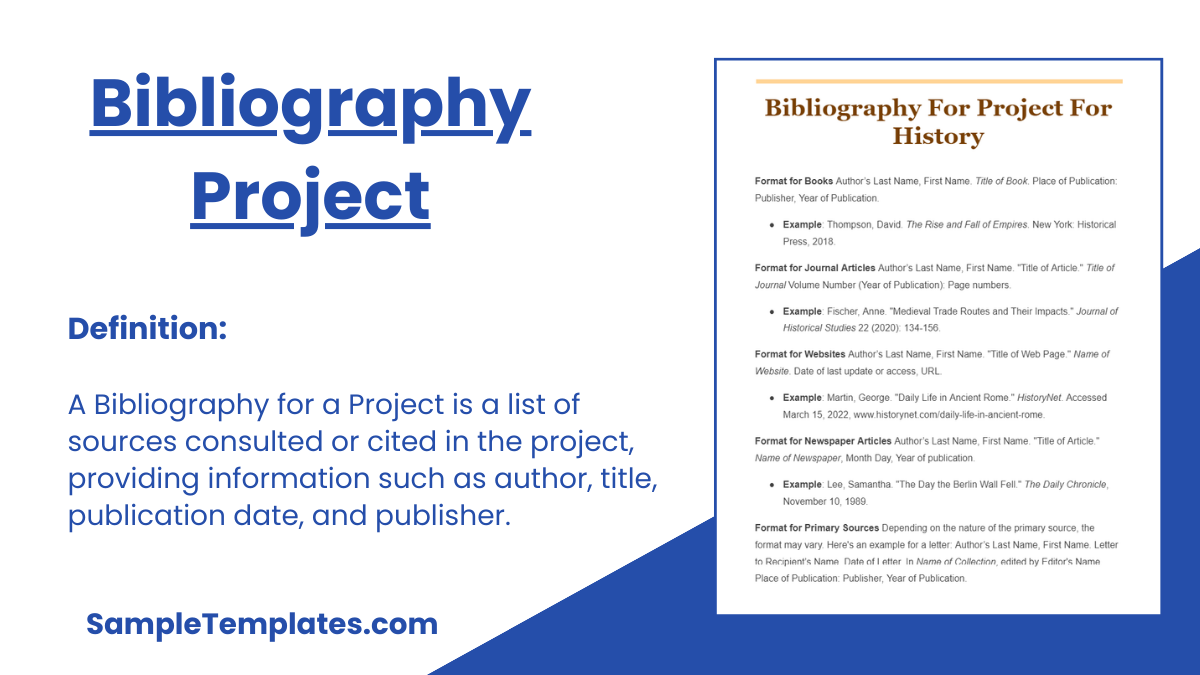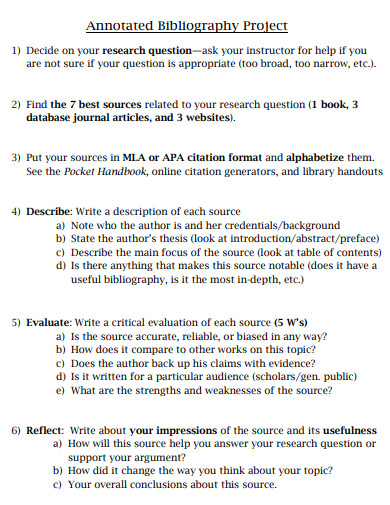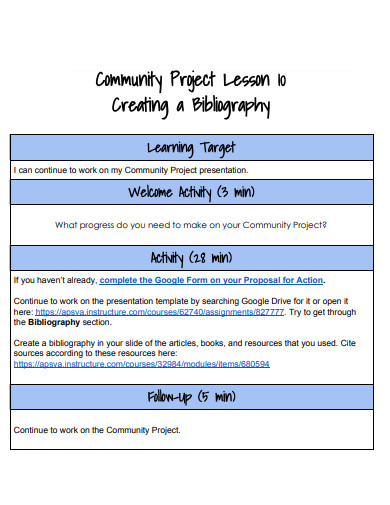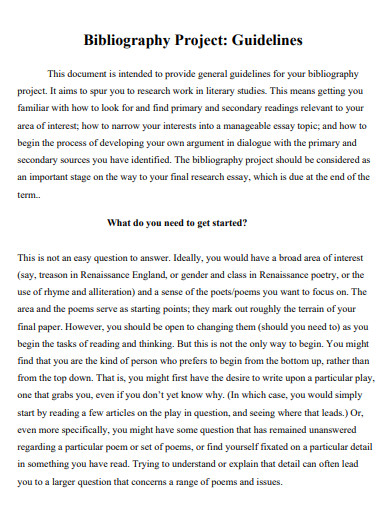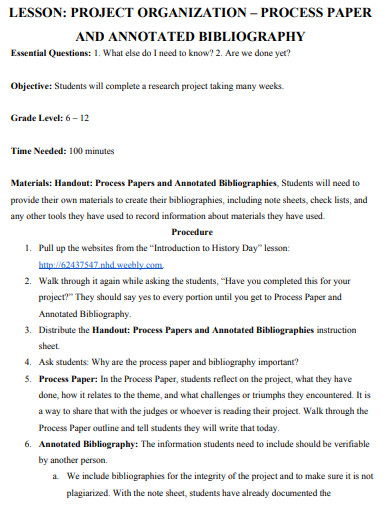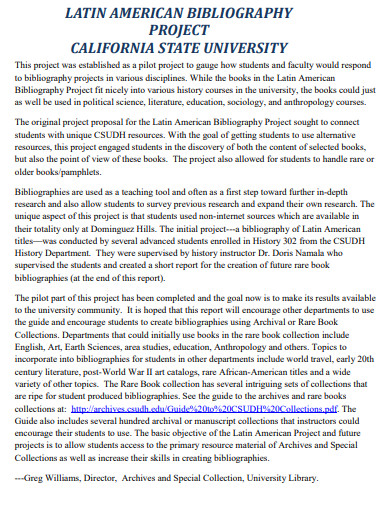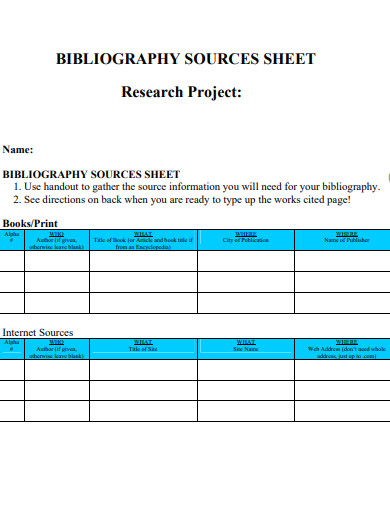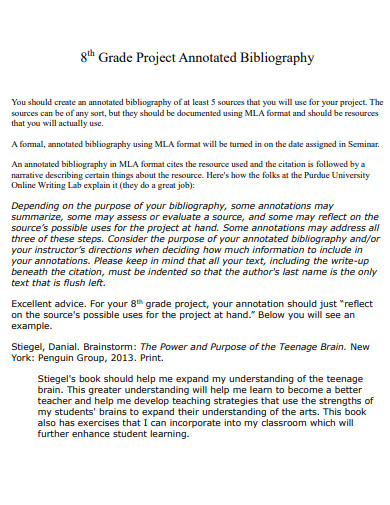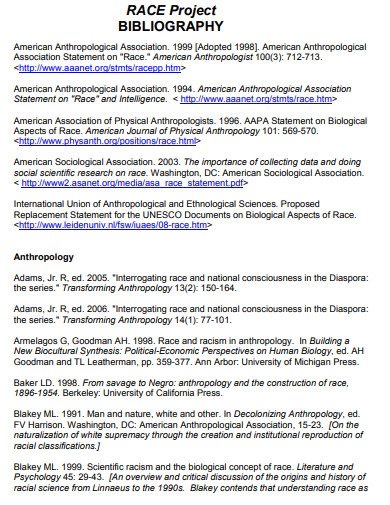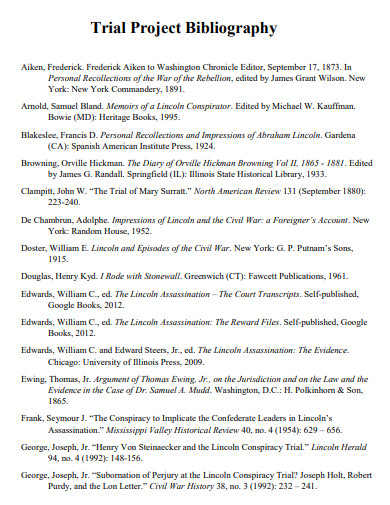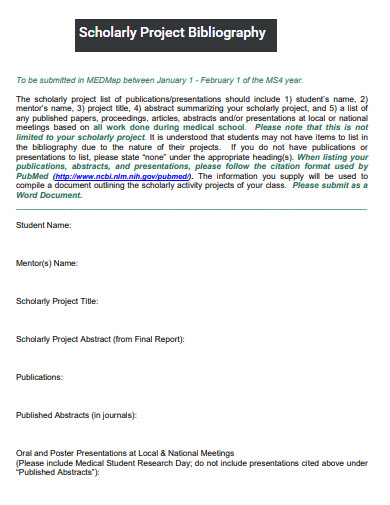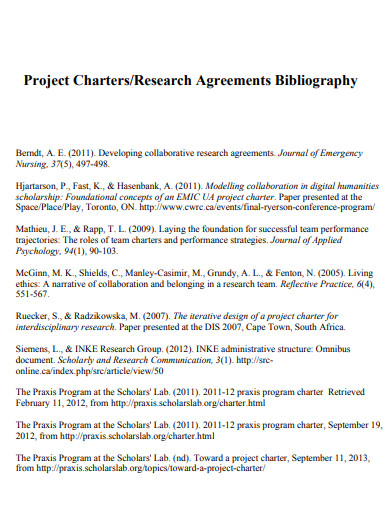If you have read some publications, either a thesis research topic or book, you will find on the end of each reading material a list of cited books and names of writers in a consistent written format. This list is very important to have in all articles, especially if they tackle topics that are very controversial or may fill seeds of doubt among readers, since this will help the writer make valid points that are logical and honest. In this article, we will talk about the importance of bibliographies in books and how you can make one for your research paper or school project.
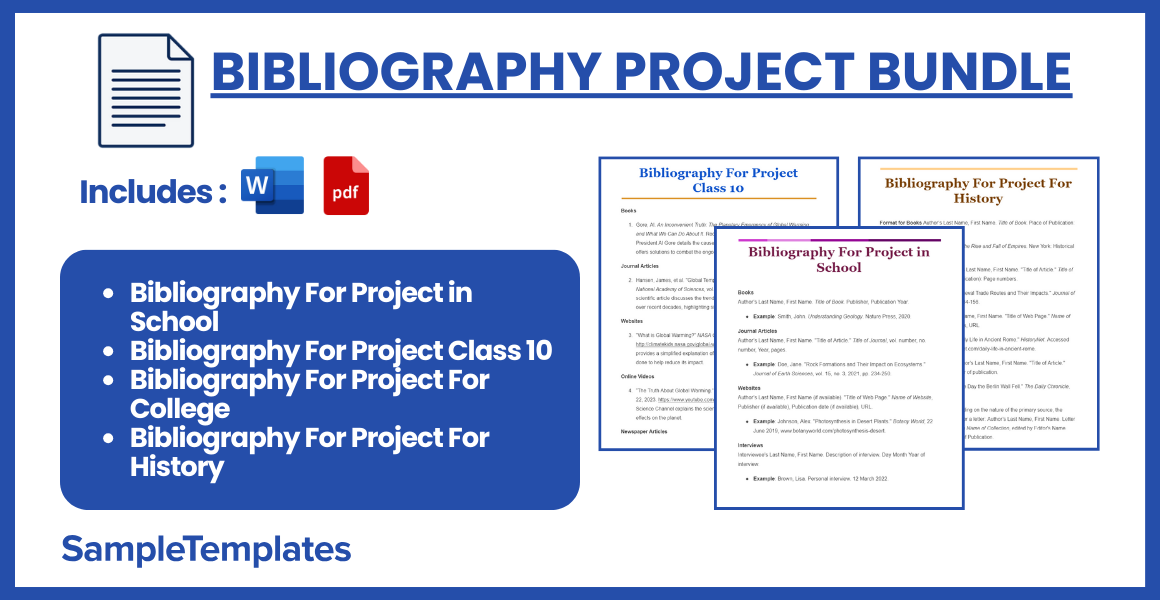
Download Bibliography Project Bundle
Bibliography For Project in School
Bibliography
Books
Author’s Last Name, First Name. Title of Book. Publisher, Publication Year.
- Example: Smith, John. Understanding Geology. Nature Press, 2020.
Journal Articles
Author’s Last Name, First Name. “Title of Article.” Title of Journal, vol. number, no. number, Year, pages.
- Example: Doe, Jane. “Rock Formations and Their Impact on Ecosystems.” Journal of Earth Sciences, vol. 15, no. 3, 2021, pp. 234-250.
Websites
Author’s Last Name, First Name (if available). “Title of Web Page.” Name of Website, Publisher (if available), Publication date (if available), URL.
- Example: Johnson, Alex. “Photosynthesis in Desert Plants.” Botany World, 22 June 2019, www.botanyworld.com/photosynthesis-desert.
Interviews
Interviewee’s Last Name, First Name. Description of interview. Day Month Year of interview.
- Example: Brown, Lisa. Personal interview. 12 March 2022.
Videos
Creator’s Last Name, First Name (or Username). “Title of Video.” Website, uploaded by Username, Day Month Year of upload, URL.
- Example: Green, Hank. “The Basics of Chemical Reactions.” YouTube, uploaded by CrashCourse, 5 May 2018, www.youtube.com/watch?v=examplevideo.
Lectures and Presentations
Presenter’s Last Name, First Name. “Title of Presentation.” Name of Conference or Event, Day Month Year, Venue, City.
- Example: Kim, Sarah. “Innovations in Renewable Energy.” Green Tech Conference, 14 August 2021, Convention Center, Chicago.
Formatting Tips
- Alphabetical Order: Arrange all entries in alphabetical order by the author’s last name.
- Hanging Indents: Use hanging indents for each entry (the second and subsequent lines of each entry are indented).
- Punctuation: Pay attention to the punctuation as shown in the examples.
- Capitalization: Capitalize titles in a title case for books and articles, sentence case for articles in journals.
- Consistency: Make sure the formatting is consistent throughout the document.
This format will help create a clear and organized bibliography that respects academic standards and provides all necessary information to locate and verify each source.
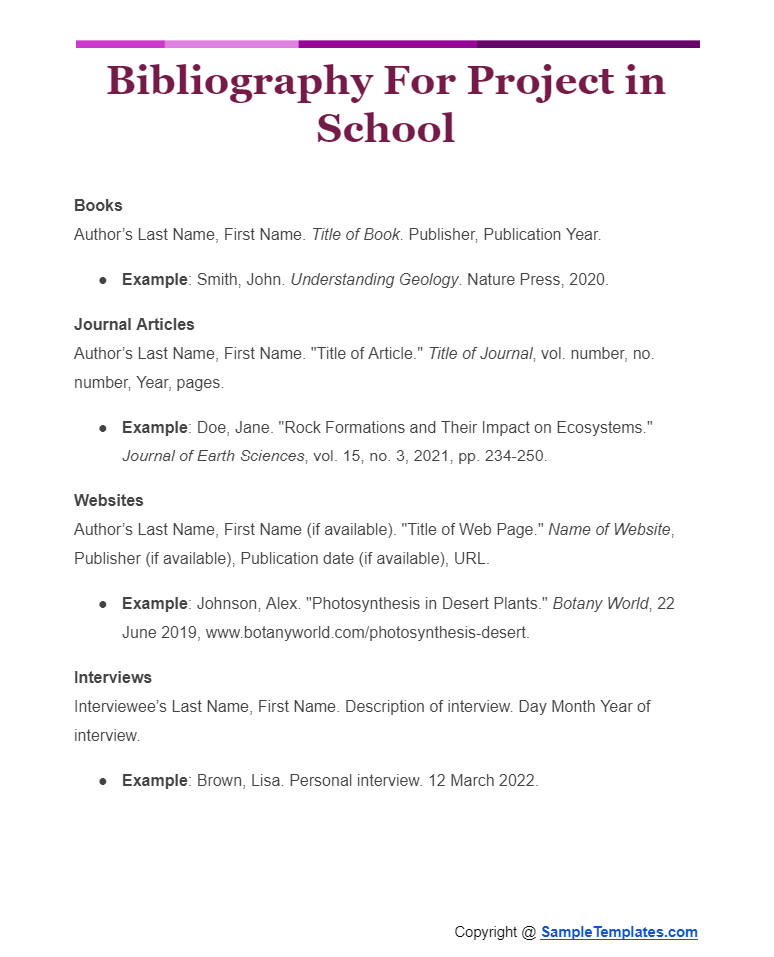
Bibliography For Project Class 10
Books
- Gore, Al. An Inconvenient Truth: The Planetary Emergency of Global Warming and What We Can Do About It. Rodale Books, 2006. This book by former Vice President Al Gore details the causes and consequences of global warming and offers solutions to combat the ongoing climate crisis.
Journal Articles
- Hansen, James, et al. “Global Temperature Change.” Proceedings of the National Academy of Sciences, vol. 103, no. 39, 2006, pp. 14288-14293. This scientific article discusses the trends and measurements of global temperatures over recent decades, highlighting significant increases.
Websites
- “What is Global Warming?” NASA Climate Kids. Accessed May 10, 2024. http://climatekids.nasa.gov/global-warming/. This NASA resource for kids provides a simplified explanation of global warming, its effects, and what can be done to help reduce its impact.
Online Videos
- “The Truth About Global Warming.” YouTube, uploaded by Science Channel, July 22, 2023. https://www.youtube.com/watch?v=xyz123. This video from the Science Channel explains the scientific basis of global warming and its potential effects on the planet.
Newspaper Articles
- Smith, John. “Efforts to Combat Global Warming.” The New York Times, May 15, 2024, p. A12. This newspaper article reviews various international efforts and policies aimed at combating global warming.
Government Publications
- United States Environmental Protection Agency. Climate Change Indicators in the United States. EPA, 2023. This government publication provides comprehensive data on how climate change is affecting the United States, including statistics on carbon emissions and temperature changes.
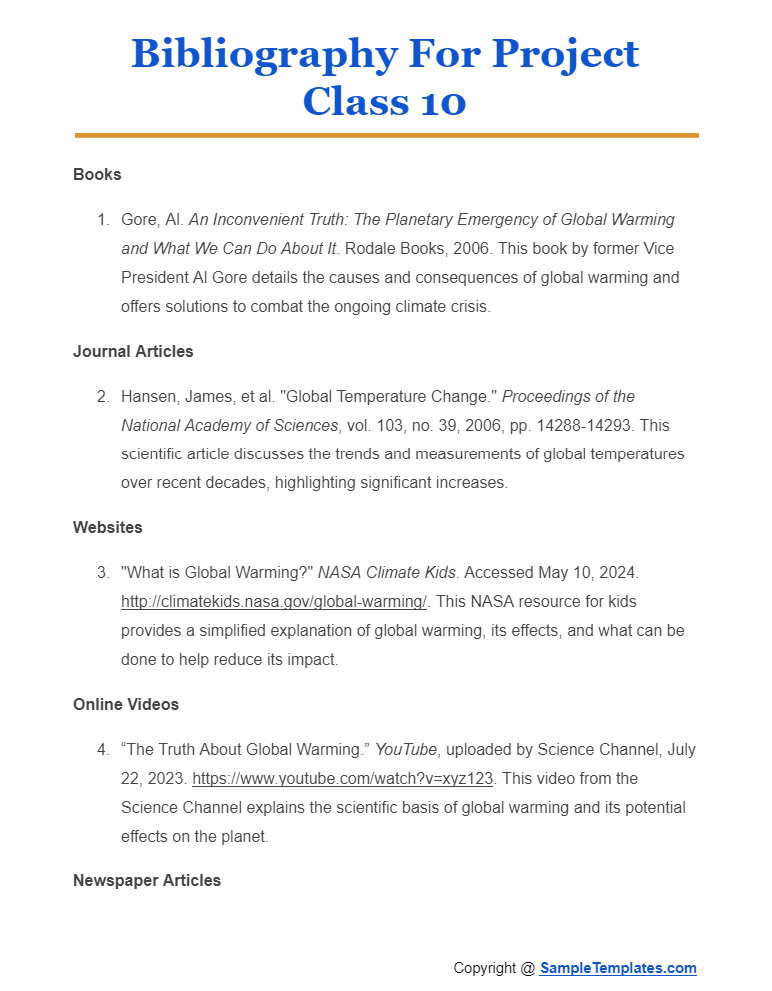
Bibliography For Project For College
For a college-level project, using a comprehensive and well-structured bibliography is crucial. Depending on your academic discipline, you might be required to use APA, MLA, Chicago, or another citation style. Below is an example of a bibliography formatted in APA style for a college project on the impact of social media on mental health:
References
- Books Baxter, L., & Burchell, K. (2020). Social Media and Mental Health: Breakdown or Breakthrough? Cambridge University Press. This book explores the dual aspects of social media’s impact on mental health, discussing both detrimental and beneficial effects.
- Journal Articles Kross, E., Verduyn, P., Demiralp, E., Park, J., Lee, D. S., Lin, N., Shablack, H., Jonides, J., & Ybarra, O. (2013). Facebook use predicts declines in subjective well-being in young adults. PLOS ONE, 8(8), e69841. https://doi.org/10.1371/journal.pone.0069841. This peer-reviewed article examines how Facebook usage correlates with changes in well-being among young adults.
- Websites Mental Health Foundation. (2022). Social Media’s Growing Impact on Our Lives. Retrieved April 15, 2024, from https://www.mentalhealth.org.uk/social-media-impact. This website provides accessible content on how social media usage influences daily life and mental health, based on recent studies and surveys.
- Online Videos Jackson, M. (Director). (2021). Digital Age Anxiety: Social Media and Mental Health. [Video]. YouTube. https://www.youtube.com/watch?v=d9JUMUb_3O0. This documentary, available on YouTube, discusses the increasing anxiety and other mental health issues associated with social media usage, featuring interviews with psychologists and habitual users.
- Conference Proceedings Liu, H., & Lopez, V. (2019). The effects of social media on the mental health of teenagers. In S. T. Henderson (Ed.), Proceedings of the International Conference on Social Media & Society (pp. 134-140). Association for Computing Machinery. This conference paper discusses a study on the mental health impacts of social media on teenagers, presented at a major international conference.
- Reports Thompson, R. (2023). Understanding the Social Media Landscape: Mental Health Insights. Pew Research Center. This report provides statistical insights into how different demographics use social media and how it correlates with their mental health status.
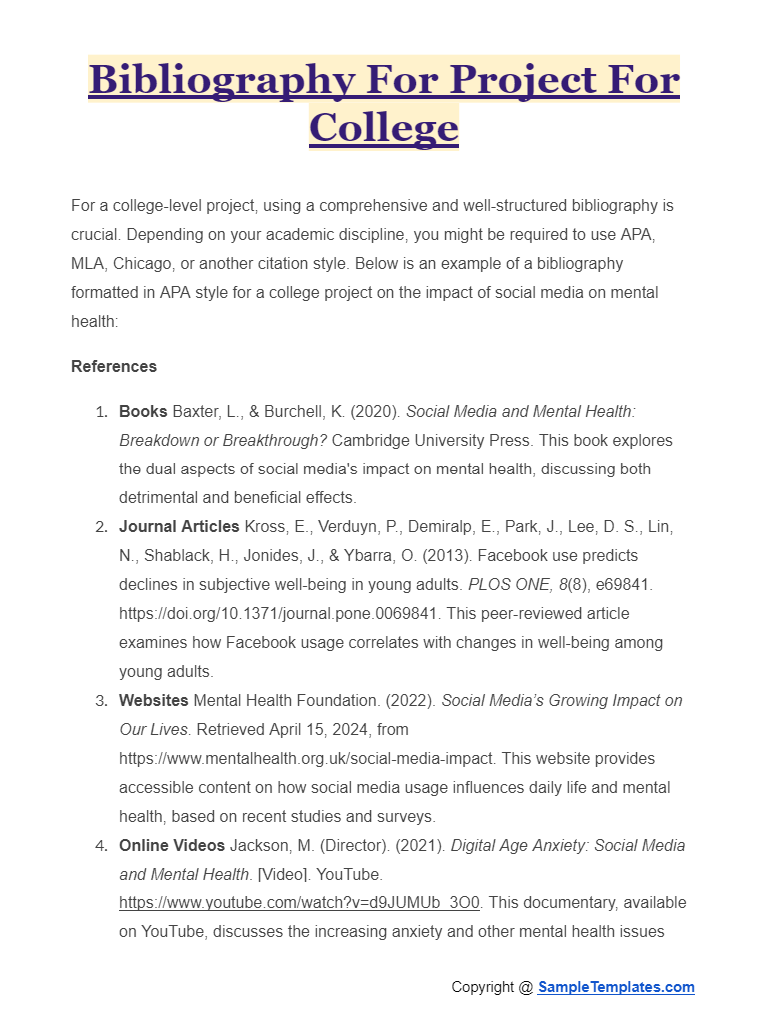
Bibliography For Project For History
Format for Books Author’s Last Name, First Name. Title of Book. Place of Publication: Publisher, Year of Publication.
- Example: Thompson, David. The Rise and Fall of Empires. New York: Historical Press, 2018.
Format for Journal Articles Author’s Last Name, First Name. “Title of Article.” Title of Journal Volume Number (Year of Publication): Page numbers.
- Example: Fischer, Anne. “Medieval Trade Routes and Their Impacts.” Journal of Historical Studies 22 (2020): 134-156.
Format for Websites Author’s Last Name, First Name. “Title of Web Page.” Name of Website. Date of last update or access, URL.
- Example: Martin, George. “Daily Life in Ancient Rome.” HistoryNet. Accessed March 15, 2022, www.historynet.com/daily-life-in-ancient-rome.
Format for Newspaper Articles Author’s Last Name, First Name. “Title of Article.” Name of Newspaper, Month Day, Year of publication.
- Example: Lee, Samantha. “The Day the Berlin Wall Fell.” The Daily Chronicle, November 10, 1989.
Format for Primary Sources Depending on the nature of the primary source, the format may vary. Here’s an example for a letter: Author’s Last Name, First Name. Letter to Recipient’s Name. Date of Letter. In Name of Collection, edited by Editor’s Name. Place of Publication: Publisher, Year of Publication.
- Example: Churchill, Winston. Letter to Franklin D. Roosevelt. March 15, 1941. In The Churchill Papers, edited by John Smith. London: War Archives Press, 1995.
Formatting Guidelines:
- Alphabetical Order: List all entries in alphabetical order by the author’s last name.
- Hanging Indents: Use hanging indents for each entry (the first line of each entry is aligned with the left margin, and subsequent lines are indented).
- Punctuation and Capitalization: Follow specific punctuation and capitalization rules as per Chicago Style guidelines.
- Consistency: Ensure consistent formatting throughout your bibliography.
This format provides a clear and comprehensive way to document sources in a history project, helping to establish credibility and allowing others to verify and build upon your research.
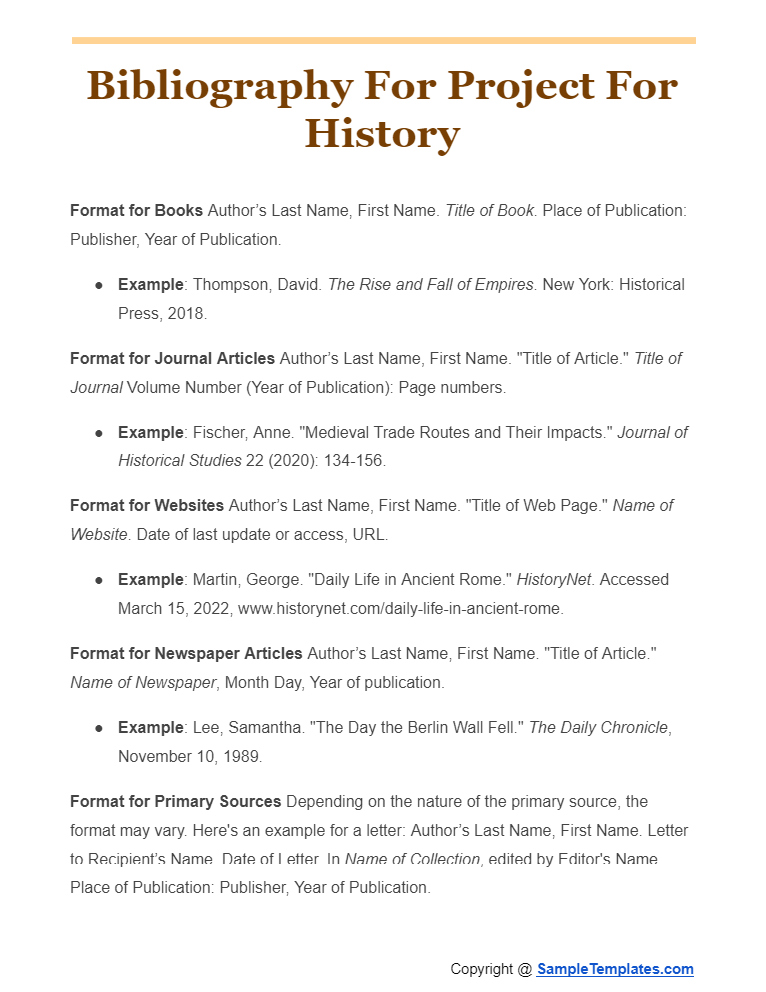
Browse More Templates On Bibliography Sample for Project
1. Annotated Bibliography Project
2. Bibliography Community Project Lesson
Types of Project
Projects come in various forms and can be classified based on their purpose, scope, and the sectors they pertain to. Here are several common types of projects:
- Construction Projects: These involve the construction of buildings or infrastructure. Construction projects require careful planning, management, and execution to ensure they are completed on time, within sample budget, and according to specifications.
- Software Development Projects: These projects involve the creation of software applications. They typically follow specific methodologies like Agile, Scrum, or Waterfall to manage the development process, involving stages such as sample planning, design, coding, testing, and deployment.
- Research Projects: Common in academic, scientific, and technology sectors, research projects aim to generate new knowledge or insights. These projects might involve experiments, fieldwork, or theoretical work and are often conducted by universities or research institutions.
- Engineering Projects: These focus on designing, developing, and analyzing various engineering products or systems. Engineering projects can be related to electrical, mechanical, civil, or chemical engineering fields, among others.
- Artistic Projects: These involve creative endeavors such as writing a book, creating a film, or producing a music album. Artistic projects require a unique blend of creativity, skill, and project management to bring an artistic vision to life.
- Educational Projects: Designed to enhance learning experiences, these projects might include new curriculum development, educational workshops, or creating learning materials. Educational projects can be undertaken by schools, colleges, educational consultants, or individual educators.
- Event Planning Projects: These projects involve organizing and managing events such as conferences, weddings, or corporate functions. Event planning requires meticulous attention to detail to manage logistics, scheduling, and execution.
- Marketing Projects: These aim to promote products, services, or brands. Marketing projects might include campaigns across various platforms, market research, and strategic planning to reach potential customers and achieve sales targets.
- Community Service Projects: Aimed at improving conditions or providing services within a community, these projects might include initiatives like setting up a food bank, conducting health awareness programs, or building a community garden.
- Consulting Projects: Involving expert advice and strategies to improve an organization’s performance, consulting projects can vary from financial consulting, management consulting to IT consulting, depending on the client’s needs.
Each type of project has its own set of challenges, requirements, and methodologies, making the approach to project management and execution significantly different across sectors. Understanding the specific nature and demands of the project type is crucial for successful completion and achieving the desired outcomes.
3. Bibliography Project Guidelines
4. Bibliography Project Organisation
5. Sample Bibliography Project
6. Bibliography Research Project
7. 8 th Grade Project Annotated Bibliography
8. Basic Bibliography Project
What Does a Bibliography Entry Include?

A bibliography entry typically includes the following elements:
- Author: The name of the author or authors. The format is usually “Last Name, First Name.”
- Title: The title of the work. This could be the title of a book, article, or webpage. It is often italicized for books and larger works, while article titles are usually in quotation marks.
- Publication Information: This varies depending on the type of source:
- For books: the publisher’s name and the year of publication.
- For journal articles: the name of the journal, volume number, issue number (if applicable), and page numbers.
- For websites: the URL and the publication or access date.
- Date: The year (and sometimes month and day) when the work was published or accessed.
- Other Details: Additional information might include edition numbers for books, names of editors or translators, or the DOI for journal articles.
The specific format and information required vary depending on the citation style, such as MLA, APA, or Chicago.
9. Trial Project Bibliography
10. Scholarly Project Bibliography
11. Project Charters Research Agreements Bibliography
What Is a Bibliography?
A bibliography is a list of source materials, which includes books, audio visuals, websites, and research projects, that are used by an individual when writing a journal article or other equivalent reading material. A bibliography list may include all the cited texts on the material so that the readers would know where the ideas or thoughts of the author came from. Bibliographies are also another way to promote another author’s book, especially if the readers have become interested in reading some passages, lines, or texts that are derived from said material.
How To Make a Bibliography For a Project?
Are you required to write a bibliography list for your project or research paper? Whether you are using it for school or for work purposes, you can now make one quickly when you follow the steps we have prepared for you below.
1. Provide All Necessary Information
When you write down your bibliography reference list, you need to have all the vital details about the materials you have used. Start with writing the author’s name using the format of LMF (last name, middle initial, and first name). Some people may write the author’s name completely, while others abbreviate the middle and first name, but you are free to decide what format you want to use. Then, follow it up when the name and date of publication, website link, or if printed in a magazine or other reference material, then write down the page number.
2. Write Your References In Chronological Order
If you want your readers to locate the correct source of material in your bibliography, you are advised to write them in chronological order. Cite your texts starting from the very first page of your article until the end. This makes it very convenient for your readers to know where to exactly find your references in case they would also like to use it. If your research instructor also wants to check your output, they can find what they need to look out for upon seeing a well-arranged bibliography.
3. Include Non-Cited Sources
The thing about bibliographies is that you can write down non-cited sources which you have used in your articles or materials. While it may make your bibliography look messy, citing the author or material of a certain idea will help your article look more professional. Just remember to use footnotes and use commas when there are two or more sources that you need to cite thereon.
4. Discuss With Your Group
If you are doing the project with other students, then it is best that you discuss what you should be writing in your bibliography, especially if all of you are working on different topics with several sources. You need to collate all of your sources and pick out the ones that will definitely make it to the list. Also, this is the best way to update your bibliography especially if the project is still ongoing and you are gradually adding more sources.
Why should I need a bibliography?
A bibliography is a way to give due credits to another author, especially if you are using their ideas and arguments to make a point in your own work. A bibliography also acts as a reference or research information guide to your readers so they will know what type of sources you are getting your information from.
Why is a bibliography important in writing?
A bibliography is very essential in any written material as it helps the author avoid any issues of plagiarism. By citing the correct material and sources where they have derived or extracted their excerpts, arguments, and points from, it saves them from copyright issues. This also helps the author build a good reputation for their material.
How do you write numbers in texts to indicate sources?
When citing sources, you need to use a superscript Arabic numeral for easy identification. The superscript numbers used in the texts should also correspond to the order in which the sources are written in the bibliography.
A bibliography might be the overlooked part of any material, but it is also one of its strongest points as it helps the author prove how accurate the contents of their material are. Without a bibliography, it will be difficult for the reader to believe what they are reading. That is why you need a bibliography which you need to include in your writing process today. Download our editable bibliography samples for project templates now by clicking our available samples or visiting our gallery.
Related Posts
FREE 10+ Cleaning Service Estimate Samples in MS Word | Google Docs | Google Sheets | MS Excel | Apple Numbers | Apple Pages | PDF
FREE 10+ MLA Format Samples in PDF | MS Word
FREE 10+ Job Map Samples in PDF | MS Word
FREE 10+ Crisis Communication Samples in PDF | MS Word
FREE 10+ Football Play Samples in PDF | MS Word
FREE 10+ Brand Strategy Samples in PDF | MS Word
FREE 10+ Brand Story Samples in PDF | MS Word
FREE 10+ Brand Guidelines Samples in PDF | MS Word
FREE 10+ Employee Offboarding Samples in PDF | MS Word
FREE 10+ Process Documentation Samples in PDF | MS Word
FREE 3+ Introduction About Myself Samples in PDF
FREE 10+ Process Map Samples in PDF | MS Word
FREE 10+ Decision Matrix Samples in MS Word | PDF | DOC
FREE 10+ Diversity and Inclusion Statement Samples [ University, Faculty, Value ]
FREE 10+ Bid Comparison Samples in PDF | MS Word
